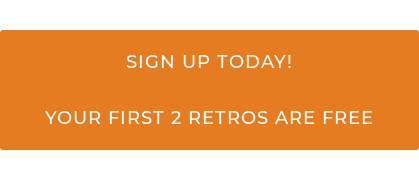You're facilitating a retrospective. You're creating action items to ensure the team walks away with tasks to help us improve. But a simple question reveals there are different interpretations to the same discussion and action item. Sound familiar?
There are several questions that come up around action items in agile retrospectives. How do you track them? How do you know they're clear? How do you know if the team is aligned around the same desired outcome? How do you know if you've been successful?
This is where Retrospectives can help prove that your team is on the same page and working toward continuously improving and not just continuously changing. To do this, it's important to recognize that just as agile is about hypothesis-proving on the product side, you will need to treat agile as hypothesis-proving on the retrospectives side.
One of the best frameworks I've seen for thinking about hypotheses during retrospectives comes from Luis Goncalves's article about using scrum retrospectives to learn. His template is to ask the following of the team: 
By changing our thinking to what we think might lead to change instead of what will lead to change, we open the conversation up to additional ideas that help us learn, work together and improve.
